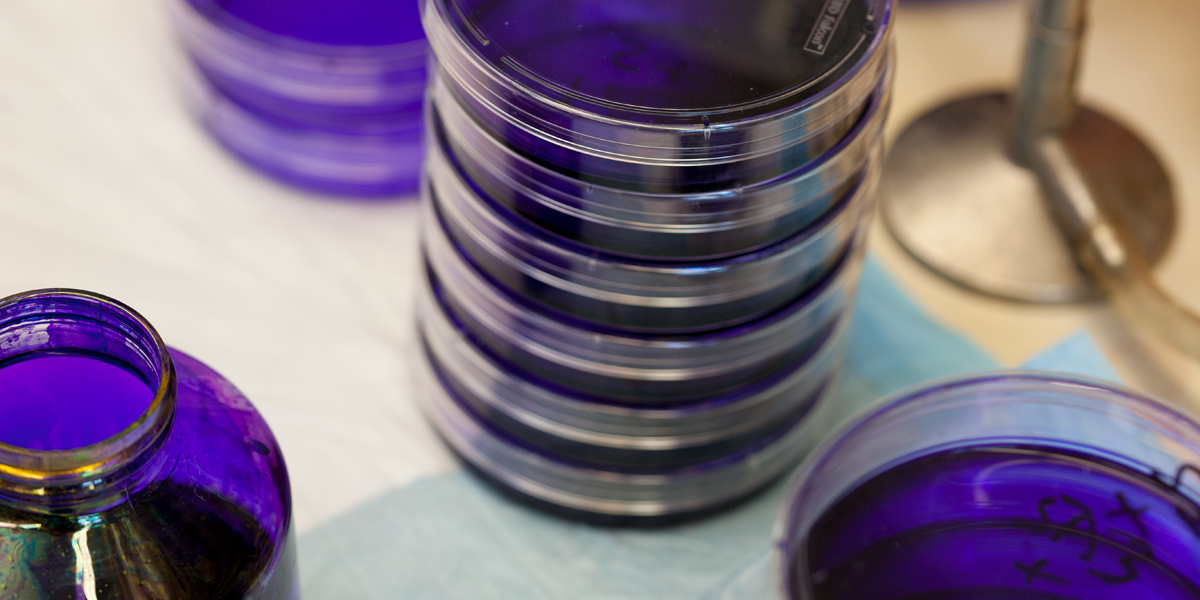ALS technique applied to cancer
Research on neurological diseases generates breakthrough in cancer treatment
Richard Smith, a neurologist who has a roster of patients with neurodegenerative disease, would not leave Ludwig scientist Don Cleveland alone. Cleveland’s laboratory at Ludwig San Diego had the means to test an idea to help people with amyotrophic lateral sclerosis (ALS, also called Lou Gehrig’s disease), whom Smith saw regularly at his San Diego clinic. “He was relentless in badgering me,” recalls Cleveland of their interactions in 2005.
The idea was to silence a gene that is mutated in a proportion of inherited ALS cases, caused by mutation in SOD-1 (superoxide dismutase 1), in the hope that quelling the bad gene could also quell disease. To silence the gene, Smith suggested using an antisense oligonucleotide, a small piece of single-stranded DNA. It was designed to destroy the gene’s mRNA, a molecular intermediary between the gene and the protein it encodes. Smith proposed testing the oligonucleotide in animals with a pump that would infuse the DNA drug directly into the cerebrospinal fluid, essentially bathing the brain and spinal cord in it.
To work, the drug needed to be taken up by the motor neurons. Cleveland didn’t think this would happen. But Smith, who later spent two years in Cleveland’s lab working on the project, argued that they had nothing to lose. “He was so tired of having nothing to offer to his patients,” says Cleveland. People with ALS suffer from increasing muscle weakness followed by paralysis, and they often die within a year or two of diagnosis.
To Cleveland’s surprise, the procedure was successful, slowing progression of ALS-like paralysis in a mouse harboring the mutant gene. When the researchers examined the nervous system of treated mice and monkeys, they observed that the oligonucleotide had found its way into all the crevices and corners of the brain and spinal cord, knocking out the mutant gene. Cleveland knew then that they had something big on their hands. “A light bulb went off,” he says. “I realized this might be more broadly useful for a range of human diseases.”
Since those first experiments, Cleveland’s lab, together with industry partner Isis Pharmaceuticals, has branched out. He and his team have applied their technique to a variety of conditions. Last year they completed animal studies on the neurodegenerative condition Huntington’s disease. And they are currently testing their technique in mouse models of glioblastoma, the most common and aggressive form of brain cancer. The researchers already have laid groundwork for moving into testing of cancer patients should the animal experiments be successful. Their technique was shown to be safe in phase 1 clinical trials for ALS, and is now being tested in people with three other conditions, including the genetic disorder spinal muscular atrophy.
The group’s study on Huntington’s disease, which was published in Neuron, shows how powerful the technique can be. The researchers infused an oligonucleotide into mice and monkeys to silence huntingtin, the gene mutated in Huntington’s disease. In a mouse model, symptoms of the disease continued to improve for months after a single two-week infusion, long after the drug had begun to disappear from the nervous system. And in primates, a 21-day infusion reduced huntingtin mRNA in most brain and spinal cord regions. The effect was sustained for at least four weeks after treatment. This strong, long-term effect bodes well for the technique’s potential to treat other conditions.
To test whether the approach will work for glioblastoma, Cleveland is developing oligonucleotides against several genes, including CenpE, which is involved in separating chromosomes during cell division. Cleveland’s lab discovered CenpE more than 20 years ago while studying how chromosomes are parceled out during cell division.
Interfering with CenpE can stop glioblastoma cells from dividing without destroying normal neurons, a drawback of many conventional chemotherapy drugs. The group’s pump system should also help overcome another obstacle to cancer therapy — getting drugs into the brain, which is shielded by the blood-brain barrier. Meanwhile, Cleveland and his colleagues are developing potentially even more effective nucleotide therapies based on single-stranded RNA, an approach they published last year in Cell.
Web Cavenee, director of Ludwig San Diego, says that Cleveland’s overlapping interests in chromosomes, cancer and neurodegeneration are a boon to Ludwig. “His studies provide an entry into cancer that would not have been taken by a more conventional cancer-centric approach.”
Cleveland credits Ludwig with recognizing that his research on neurological diseases could generate a breakthrough for cancer.
“Ludwig allows its investigators to go in directions that they think can make a positive contribution,” says Cleveland. “The idea that everything needs to be highly directed to solve major questions in human disease is just not true and the leadership of Ludwig understands that.”
